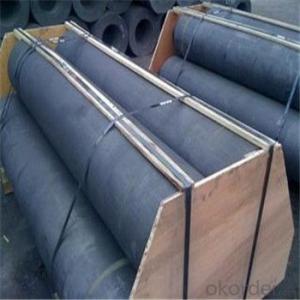Graphite electrodes, the unsung heroes of the metallurgical industry, are often overlooked, yet they play a pivotal role in the production of various metals. These cylindrical wonders are made from a material that has been around for centuries, but their significance in modern industry is undeniable. Let’s dive into the fascinating world of graphite electrodes and explore their composition, properties, and applications.
The journey of graphite electrodes begins with the raw material, graphite. Graphite, a form of carbon, is known for its unique properties such as high thermal conductivity, electrical conductivity, and resistance to heat. It’s these properties that make graphite the perfect candidate for creating electrodes. The process of making graphite electrodes involves several steps, including calcination, grinding, mixing, pressing, and baking. Each step is crucial in ensuring the final product is of the highest quality.
Calcination is the first step in the production process. It involves heating the raw graphite material to a high temperature in the absence of air. This process removes impurities and increases the crystallinity of the graphite, making it more suitable for electrode production. After calcination, the graphite is ground into a fine powder, which is then mixed with binders and other additives to create a homogeneous mixture. These binders help to bind the graphite particles together, ensuring the electrode maintains its shape and structure during use.
The next step is pressing, where the mixed graphite powder is compressed into a cylindrical shape under high pressure. This step is essential for giving the electrode its desired form and density. Once the electrode has been pressed, it is then baked in a furnace at high temperatures. Baking hardens the electrode and further increases its density and strength. The final product is a graphite electrode that is ready for use in various industrial applications.
But what makes graphite electrodes so special? Their unique properties make them ideal for use in electric arc furnaces (EAFs) and other metallurgical processes. In EAFs, graphite electrodes serve as the primary source of electrical energy, generating the heat necessary for melting and refining metals. The high thermal conductivity of graphite allows it to efficiently transfer heat, while its electrical conductivity ensures that the current is effectively distributed throughout the furnace.
Another advantage of graphite electrodes is their resistance to heat. They can withstand temperatures of up to 3,000 degrees Celsius, making them perfect for the harsh conditions found in metallurgical processes. Additionally, graphite electrodes have a low coefficient of thermal expansion, which means they don’t expand or contract significantly with changes in temperature. This property is crucial for maintaining the structural integrity of the electrode during prolonged use.
Graphite electrodes are also known for their chemical stability. They do not react with most metals, which makes them suitable for use in various metallurgical processes. This chemical inertness is particularly important in the production of reactive metals, such as aluminum and titanium, where contamination from the electrode material could be detrimental to the final product.
The versatility of graphite electrodes extends beyond their use in EAFs. They are also used in other applications, such as the production of silicon metal, the manufacture of synthetic diamonds, and the extraction of minerals from ores. In each of these applications, the unique properties of graphite electrodes make them indispensable.
Despite their importance, graphite electrodes are not without their challenges. One of the main issues is the wear and tear they experience during use. The high temperatures and intense electrical currents can cause the electrodes to erode over time, reducing their effectiveness and requiring frequent replacement. This can be a costly and time-consuming process for industries that rely on these electrodes.
Another challenge is the environmental impact of graphite electrode production. The mining and processing of graphite can have negative effects on the environment, including deforestation, habitat destruction, and pollution. As a result, there is a growing need for more sustainable and environmentally friendly methods of producing graphite electrodes.
In conclusion, graphite electrodes are a critical component of the metallurgical industry, thanks to their unique properties and applications. From their humble beginnings as raw graphite material to their transformation into indispensable tools for metal production, these cylindrical marvels demonstrate the incredible versatility and resilience of graphite. As we continue to innovate and develop new technologies, it is essential that we also consider the environmental impact of our actions and strive for more sustainable solutions. Only then can we ensure the continued success and growth of the metallurgical industry.

